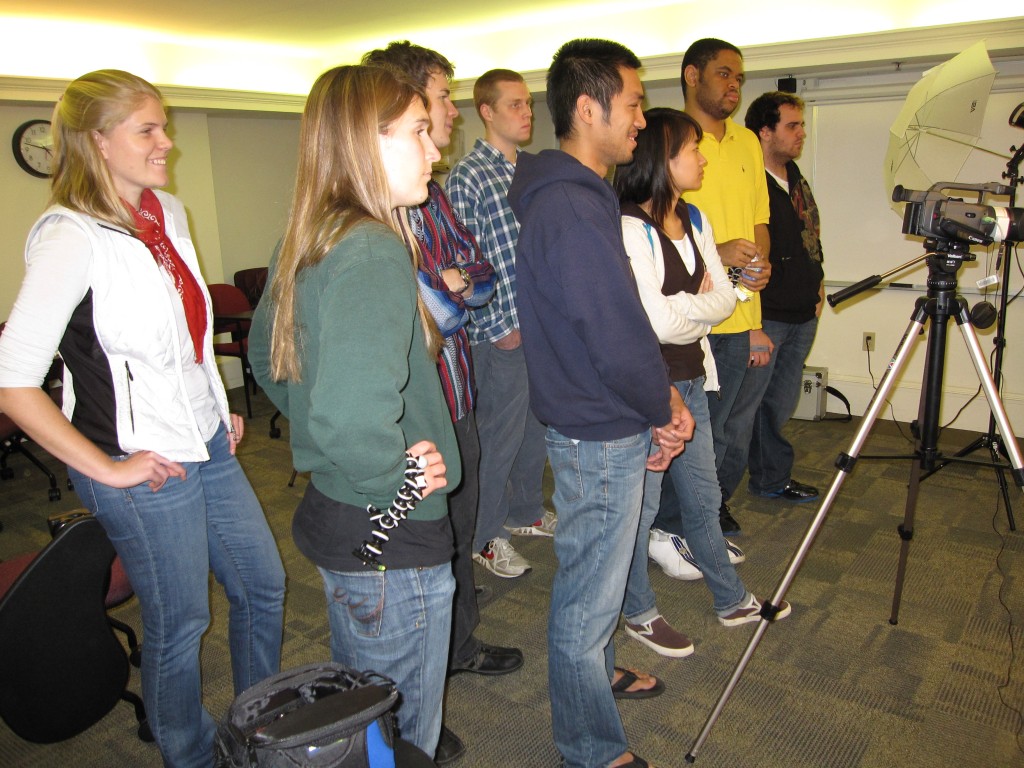
Commitments to cut GHG emissions are needed from developed countries, and from big developing countries. "The less developed countries have to stand up to the Chinas, Indias and Brazils, which they're not used to doing and not comfortable with", says Huq.
The Dickinson K2C research team is volunteering to help the International Institute for Environment and Development (IIED) with Development and Climate Days at COP15, a 4-day event in Copenhagen that will draw attention to the multiple connections between development goals and climate change, with an emphasis on concerns of developing countries. The organizer of the event, Saleem Huq, was recently interviewed by The Nation, a summary of which is given below. (Read full article from The Nation.)
When asked what are the priorities of poor countries in Copenhagen, Huq responded: “Obtaining a lot more money for adaptation to climate change is their primary goal. The latest studies suggest that adaptation will need tens of billions of dollars annually, not the smaller amounts discussed in the past.”
He also noted that the less developed countries have formed a common position, calling for a limit on global temperature increase of 1.5 degrees Celsius above preindustrial levels. This is an ambitous goal that will require the big developing countries to set mitigation targets along with developed countries. “The less developed countries have to stand up to the Chinas, Indias and Brazils, which they’re not used to doing and not comfortable with,” says Huq.
In response to a question about what Americans can do to help, Huq noted that the position of the US has differed from the rest of the world, most of which favors deep reductions in greenhouse gas emissions. He says that the administration in Washington “gets it.” But the problem is the US public and the Congress. President Obama “needs to spend more” [political capital] to get a climate bill, according to Huq.
Tags: adaptation, deveoping countries, saleem huq
A COP15 Research Team from Dickinson College
The Kyoto to Copenhagen (K2C) Research Team from Dickinson College is a group of 15 interdisciplinary students traveling to the COP15 December 7th-19th who are exploring COP15 participants’ perceptions and values on climate change negotiations through an interview-based research project.
Focusing on the issue of “common but differentiated responsibilities,” the interdisciplinary student team plans to explore the values and viewpoints of delegation members, citizens, youth, constituency members, and global citizens as unique voices in a global movement to understand and mitigate dangerous climate change.

Students from the K2C research team receive video equipment training at Dickinson College during the Fall semester of their course. (November 2009)
Will you be in Copenhagen for the COP15? K2C wants your voice, your interview. Our team would love to set up a time to hear your voice and your story.
Please send us an email with your name, what delegation you are attending the COP15 with, and when you would be available for an interview. The K2C team will work with your schedule to set up a time for a short interview (15 minutes) at our exhibit booth, or a longer interview (30-1hr) with professional set-up at another location within the conference center.
Contact us in Copenhagen by visiting our exhibit space
Emailing us at kyoto2copenhagen@gmail.com, or
Give us a ring at 717.448.4862 or 717.609.2676.
Tags: COP15 Resources, Dickinson College, Kyoto to Copenhagen, student research, youth climate action
One common consensus reached by all parties to the United Nations Framework Convention on Climate Change is that global warming is happening and needs to be addressed. However, with this is the dilemma of how to set standards that are common yet differentiated. For instance, should nations like China that currently out-produce the United States limit their emissions because of a common obligation or should the United States bare the burden because of historical emissions data? Issues like these are extremely difficult, which is why the Common But Differentiated Paper aims to analyze the different stances and propose solutions that will hopefully be reached at the 15th Conference of the Parties in Copenhagen, Denmark.
Tags: common but differentiated, common but differentiated responsibilities
Absolute vs Intensity Emission Targets
Since the earliest stages of climate change negotiations, methods for making emissions cutbacks have been a subject of hot debate. Absolute caps, which would establish national, legally-binding emission goals, are the most well-known and environmentally effective system, however developing countries have recently pushed for intensity targets instead, insisting that target levels not interfere with growth and development. This report explores the pros and cons of the absolute and intensity cap system methods, seeking to balance equity concerns with the pressing concerns about climate change consequences. Is the most effective method also the most ethical?
Further reading:
CO2 targets: Where Should Humanity Aim?, Hansen
How to Avoid Dangerous Climate Change
The Case for Intensity Targets, William Pizer
The role trade will play in the post-Kyoto climate negotations has yet to been fully determined. Efforts have been made to reduce GHG emissions through trade, but many questions about the range and form of finance and investment for innovation, adaptation, and technology transfer remain. For our group’s key issue paper I focused on the issue of technology transfer and patent rights. As I soon found out, much needs to be done on this front in subsequent climate change negotations.
As under-secretary general at the UN Department of Economic and Social Affairs points out, “the global climate policy will succeed — or fail — depending on whether it brings low-emissions technologies, and technologies for adaptation, within the reach of poor countries and communities without further delay.” That said, much will have to improve to make it easier for developing and Least Developing Countries (LDCs) to achieve low carbon livelihoods. A 2008 Organization for Economic Cooperation and Development (OECD) study points out that from 1985-2004 80% of mitiagation related-technology transfers were between developed countries. The remaining 20% that went to developing countries only went to China and Korea.

While many point to the need for strong patent rights to encourage technological innovation, an excessive level of protection of patents might impede the acquisition of new climate-related technologies, especially in LDCs. The UNFCCC has recognized that countries in the African region and small island developing states have “specific needs and special situations” that require more urgent consideration with regard to technology transfer. To put it simply, these countries are in the initial stages of technological development and patent rights would probably not operate as an incentive for the transfer of technology as it would in more developed countries. Neverthless, patent rights (also known as intellectual property rights) are only one of the many obstacles standing in the way of widespread and urgent technology transfer.
In order for technology transfer to have a greater impact, negotiators need to address the first things first. Issues of finance and investment will drive the future success or failure of technology transfer. UNFCCC general secretary Yvo de Boer estimates that rich countries need to start a fund of US$10 billion on the table in Copenhagen. In the longer term, an estimated US$200 billion is needed for mitigation technology and an aditional US$100 billion will be needed to help poor countries adapt to climate change.
Read here for the latest up-to-date information on technology transfer in the context of COP15 in Copenhagen and beyond.
Tags: adaptation, developing countries, technology transfer, trade

Your Comments